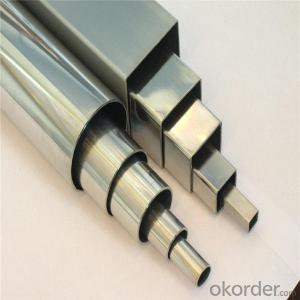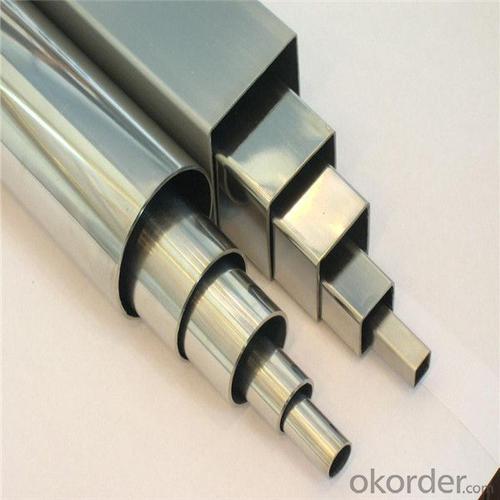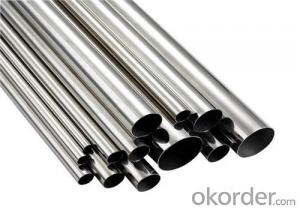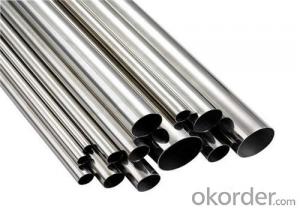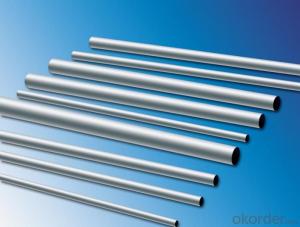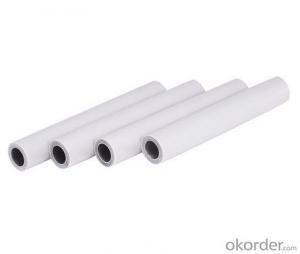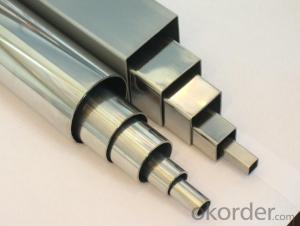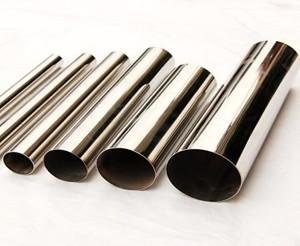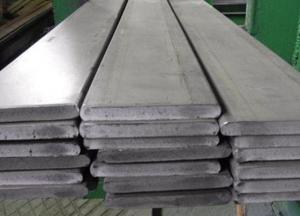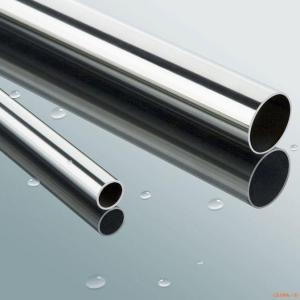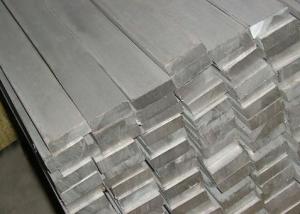304 304l 316 316l 317 317l Stainless Steel Welded Pipe
- Loading Port:
- Shanghai
- Payment Terms:
- TT OR LC
- Min Order Qty:
- 2 m.t.
- Supply Capability:
- 25000 m.t./month
OKorder Service Pledge
OKorder Financial Service
You Might Also Like
Specification
304 304l 316 316l 317 317l stainless steel welded pipe
1. Product Description
The details of my company | |||
The stainless steel sheet/coil/strip | |||
standard | ASTM,GB | ||
material | 201,202,301,304,316,316L,316LN,317,317L,309,309S,310,310S,430,409 | ||
specification | thickness | 0.3mm—20mm | |
width | 120mm—2000mm | ||
Production technology | Hot rolled , | ||
cold rolled | |||
Surface treatment | 2B,BA,8K,No.1,Etching,Hairline,Satin,Mirror,Vibration,Bead Blast,Embossed | ||
The stainless steel pipe | |||
standard | ASTM,GB | ||
material | 201,202,301,304,316,316L,316LN,317,317L,309,309S,310,310S,430,409 | ||
specification | Wall thickness | 0.3mm-60mm | |
Round | 6mm-630mm | ||
Square | 10*10mm-150*150mm | ||
rectangle | 10*20mm-100*200mm | ||
Surface treatment | Polishing (180#,220#,240#,320#400#,600#), Hairline,aid pickling and so on | ||
Production technology | Seamless steel pipe | ||
Welded steel pipe | |||
Surface treatment | Polishing or not | ||
The stainless steel bar | |||
standard | ASTM,GB | ||
material | 201,202,301,304,316,316L,316LN,317,317L,309,309S,310,310S,430,409 | ||
specification | Round | ||
Square | |||
rectangle | |||
Product Show
2. Product Pictures of 304 304l 316 316l 317 317l stainless steel welded pipe
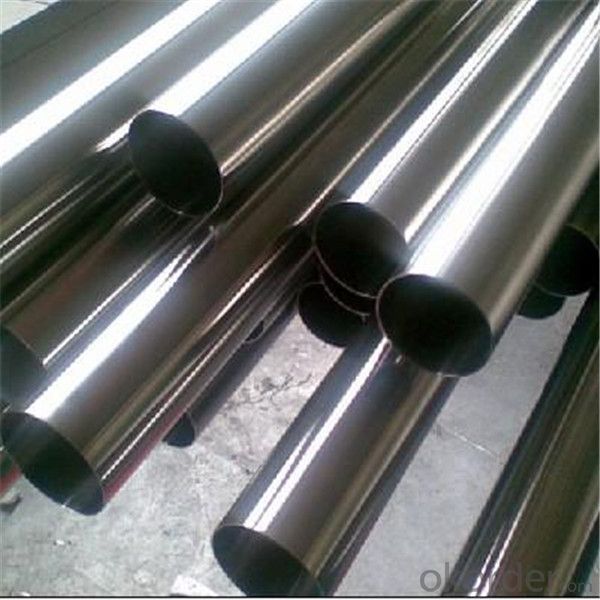
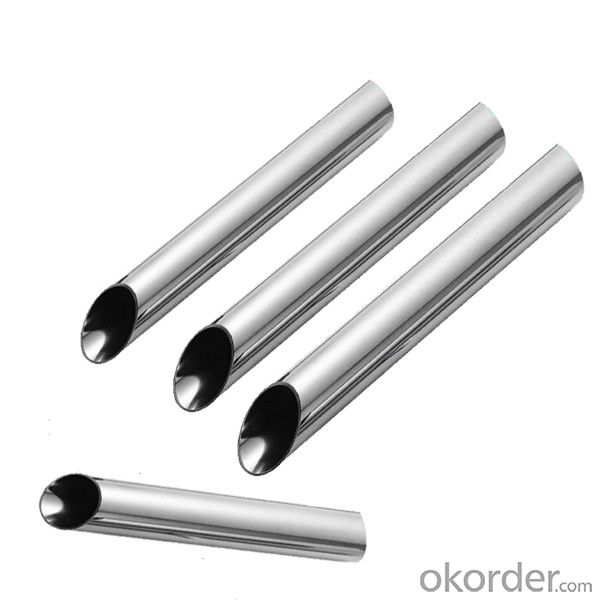
3. Applications
Milk and food industry, pharmaceutical industry, industries with special internal surface requirements.
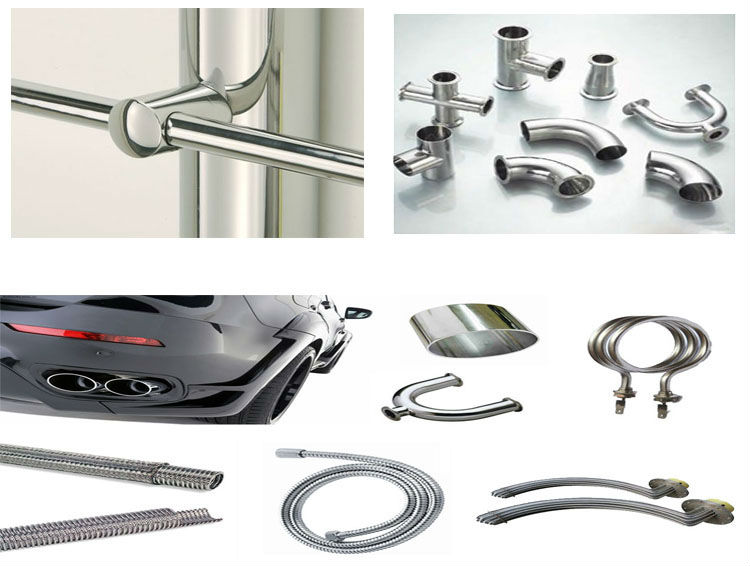
4. Stainless steel conservation
Stainless steel is a popular metal for appliances these days. Many kitchen appliances, both large and small, are made with stainless steel. Pots and pans and eating utensils are also made with stainless steel. One advantage of stainless steel is that is very resistant to rusting. But it can get rust stains from transference of rusty objects. You can keep stainless steel rust-free by following a few simple steps.
Clean frequently with a cleaner and water. Any cleaner that is safe for glass is usually safe for stainless steel.
Scrub off all rust from these objects with a scrubbing pad or steel wood pad. This means getting rid of rust from pots and pans before putting them into a stainless steel sink or on top of a stainless steel stove.
Put a rubber mat at the bottom of the stainless steel sink before placing rusted pots and pans (such as cast iron cookware) in the sink.
Apply a thin layer of lubricant (such as mineral oil) to the surface of the stainless steel. This prevents rust from forming.
Inspect equipment frequently, if you notice discoloration, tarnish or water stains, increase the frequency of your fresh water rinses to reduce accumulated chemicals
- Q: Can stainless steel pipes be used for air conditioning systems?
- Yes, stainless steel pipes can be used for air conditioning systems. Stainless steel is a durable and corrosion-resistant material, making it suitable for various applications, including air conditioning systems. Stainless steel pipes offer excellent resistance to oxidation and rust, ensuring longevity and preventing leaks. Additionally, stainless steel pipes can withstand high temperatures and pressure, making them ideal for use in air conditioning systems.
- Q: Are stainless steel pipes recyclable?
- Yes, stainless steel pipes are recyclable. Stainless steel is a highly sustainable material that can be recycled indefinitely without losing its properties. Stainless steel pipes can be melted down and transformed into new stainless steel products, making them a valuable resource in the recycling industry. The recycling process for stainless steel pipes involves collecting and sorting the pipes, melting them down in a furnace, and then forming them into new products. Recycling stainless steel pipes not only conserves natural resources but also reduces energy consumption and greenhouse gas emissions associated with the production of new stainless steel.
- Q: What is the difference between 304F and 316F stainless steel pipes?
- The composition and characteristics of 304F and 316F stainless steel pipes are what set them apart. 304F stainless steel is categorized as an austenitic stainless steel, meaning it contains high levels of chromium and nickel. It is renowned for its exceptional corrosion resistance, weldability, and formability. Consequently, it is widely used in various industries, including food processing, chemical processing, and construction. However, 304F stainless steel is not as resistant to chloride corrosion as 316F stainless steel. On the flip side, 316F stainless steel is also classified as an austenitic stainless steel, but it has elevated levels of chromium, nickel, and molybdenum compared to 304F stainless steel. The addition of molybdenum enhances its corrosion resistance, particularly against chlorides and other aggressive chemicals. As a result, 316F stainless steel pipes are suitable for more demanding applications, such as marine environments, where exposure to saltwater and corrosive chemicals is prevalent. To sum up, the key difference between 304F and 316F stainless steel pipes lies in their corrosion resistance. While both are classified as austenitic stainless steels, 316F stainless steel offers superior resistance to chloride corrosion, making it the superior choice for applications where corrosion resistance is of utmost importance.
- Q: How do you protect stainless steel pipes from external damage?
- To protect stainless steel pipes from external damage, there are several measures you can take: 1. Apply a protective coating: Using a protective coating such as paint or epoxy can help shield the stainless steel pipes from moisture, chemicals, and physical damage. The coating should be selected based on the specific environment and potential risks to ensure maximum protection. 2. Install pipe supports: Properly installing pipe supports can prevent excessive movement and vibration, which can lead to damage over time. Using brackets, clamps, or hangers to secure the pipes in place will minimize the risk of external impacts causing harm. 3. Implement corrosion prevention measures: Stainless steel pipes are resistant to corrosion, but in certain environments, they can still be susceptible to damage. Regularly inspect the pipes for signs of corrosion and promptly address any issues. Applying corrosion inhibitors or using cathodic protection techniques can also help safeguard the pipes from external damage. 4. Use protective guards or covers: In areas where the pipes are exposed to potential impact or physical damage, installing protective guards or covers can provide an additional layer of protection. These guards can be made of materials such as plastic or rubber and can be easily installed or removed as needed. 5. Implement proper handling and storage procedures: During transportation or storage, it is essential to handle stainless steel pipes with care. Avoid dropping or dragging them and ensure they are stored in a clean, dry, and well-ventilated area to prevent moisture buildup and potential damage. By following these measures, you can effectively protect stainless steel pipes from external damage, prolonging their lifespan and ensuring their functionality.
- Q: Are stainless steel pipes suitable for food storage facilities?
- Yes, stainless steel pipes are highly suitable for food storage facilities. Stainless steel is a non-reactive and corrosion-resistant material, making it ideal for handling food and beverages. It does not impart any taste, odor, or contaminants to the stored food, ensuring its quality and safety. Stainless steel pipes are also easy to clean, maintain hygiene standards, and have a long lifespan, making them a preferred choice for food storage facilities.
- Q: What is sanitary stainless steel pipe?
- Surface finish: the pipe inside and outside surface polishing treatment, the pipe surface is bright; it is a mirror. We often say is mainly to prevent the tube away the fluid material formed within the tube wall, a long time is easy to pollute and formed pipe plug.
- Q: Are stainless steel pipes suitable for extreme temperatures?
- Yes, stainless steel pipes are suitable for extreme temperatures. Stainless steel is known for its excellent heat resistance properties, making it a popular choice for applications that involve high temperatures. Stainless steel pipes can withstand both extremely high and low temperatures, making them suitable for a wide range of industries such as oil and gas, chemical processing, power generation, and aerospace. The high chromium and nickel content in stainless steel alloys contribute to their ability to resist corrosion and oxidation, allowing them to maintain their structural integrity even under extreme temperature conditions. Additionally, stainless steel pipes have low thermal expansion and contraction rates, ensuring that they can withstand thermal cycling without significant distortion or damage. Overall, stainless steel pipes are a reliable and durable option for handling extreme temperatures.
- Q: Are stainless steel pipes suitable for high-temperature applications?
- Yes, stainless steel pipes are suitable for high-temperature applications. Stainless steel has excellent heat resistance properties and can withstand extreme temperatures without losing its structural integrity. It is commonly used in industries such as power generation, oil and gas, chemical processing, and aerospace, where high-temperature environments are prevalent.
- Q: What is the difference between seamless and extruded stainless steel pipes?
- Seamless and extruded stainless steel pipes are both types of stainless steel pipes used in various industries and applications. However, there are certain differences between the two. 1. Manufacturing Process: The main difference between seamless and extruded stainless steel pipes lies in their manufacturing process. Seamless stainless steel pipes are produced through a method called hot rolling or hot extrusion, where a solid cylindrical billet is heated and pushed or pulled through a die to form a pipe without any seams. On the other hand, extruded stainless steel pipes are manufactured through a process called cold extrusion, where a solid stainless steel billet is forced through a die to obtain the desired shape and size. 2. Seamless Nature: As the name suggests, seamless stainless steel pipes do not have any seams or welds along their length. This makes them stronger and more reliable in terms of structural integrity. In contrast, extruded stainless steel pipes may have visible seams or welds, which can potentially weaken the overall structure. 3. Sizes and Dimensions: Seamless stainless steel pipes are available in a wider range of sizes and dimensions compared to extruded pipes. This is due to the hot rolling process, which allows for greater flexibility in shaping and forming the pipes. Extruded stainless steel pipes, on the other hand, are limited in terms of their size range and are generally used for smaller diameter applications. 4. Surface Finish: Seamless stainless steel pipes usually have a smooth and polished surface finish, which makes them suitable for applications where aesthetics are important, such as architectural structures or decorative elements. Extruded stainless steel pipes, on the other hand, may have a rougher surface finish due to the manufacturing process, making them more suitable for industrial or structural applications where appearance is less critical. 5. Cost: In general, seamless stainless steel pipes tend to be more expensive than extruded pipes due to the complexity of the manufacturing process. The hot rolling method requires specialized equipment and a higher level of expertise, which adds to the production cost. Extruded stainless steel pipes, being produced through a simpler cold extrusion process, are typically more cost-effective. In summary, the main differences between seamless and extruded stainless steel pipes lie in their manufacturing process, seamless nature, size range, surface finish, and cost. Depending on the specific requirements of a particular application, one may be preferred over the other.
- Q: Can stainless steel pipes be insulated with mineral wool?
- Certainly, mineral wool is a viable option for insulating stainless steel pipes. Widely utilized in multiple sectors like plumbing and construction, mineral wool serves as a reliable and efficient insulation material. It exhibits remarkable properties such as withstanding elevated temperatures, providing exceptional thermal and acoustic insulation. Moreover, mineral wool possesses non-combustible characteristics and moisture resistance, rendering it suitable for insulating stainless steel pipes conveying either hot or cold fluids. By employing this insulation, one can combat heat loss, decrease energy consumption, and safeguard against condensation and pipe sweating.
Send your message to us
304 304l 316 316l 317 317l Stainless Steel Welded Pipe
- Loading Port:
- Shanghai
- Payment Terms:
- TT OR LC
- Min Order Qty:
- 2 m.t.
- Supply Capability:
- 25000 m.t./month
OKorder Service Pledge
OKorder Financial Service
Similar products
Hot products
Hot Searches
Related keywords
